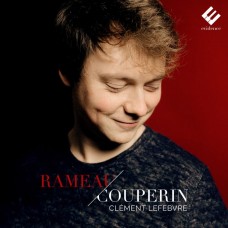|
Couperin and Rameau, contemporaries with divergent trajectories, incarnation of the French musical taste and its picturesque elegance, meet the modern piano!
The elder, Couperin, is already an organist at the Chapelle Royale at just 25 years old. As for Rameau, he only becomes the official musician of the court at 60 years old. The first concentrates his efforts on the harpsichord and the edition of his works. And the second prides itself on theory and looks towards opera.
Clement Lefebvre, winner of the first prize and the Audience Award at the 2016 James Mottram International Piano Competition in Manchester, presents in this first solo recording an original choice of pieces newly lit by the timbre of the piano. An expressive journey that occupies the space of a day – from the point of the day (Le Point du jour) to the Dodo (ou L'Amour au berceau) –, strewn with evocations of nature (Les Rozeaux).
Clement Lefebvre's clear expression and the freshness of his play restore all the beauty and majestic simplicity of these miniatures.
Jean-Philippe Rameau (1683-1764)
1. La Dauphine (ca. 1747)
François Couperin (1668-1733)
Pieces issues des Troisieme (1722) et Quatrieme Livres de pieces de clavecin (1730)
2. Le Point du jour (IV, 22e Ordre en re majeur)
3. Les Rozeaux (III, 13e Ordre en si mineur)
4. L'Arlequine (IV, 23e Ordre en fa majeur)
5. L'Anguille (IV, 22e Ordre en re majeur)
6. La Couperin (IV, 21e Ordre en mi mineur)
7. Les Tricoteuses (IV, 23e Ordre en fa majeur)
8. Les Folies françoises ou Les Dominos (III, 13e Ordre en si mineur)
9. Les Petits Moulins a vent (III, 17e Ordre en mi mineur)
10. La Pantomime (IV, 26e Ordre en fa diese mineur)
11. Le Dodo, ou L'Amour au berceau (III, 15e Ordre en la majeur)
Jean-Philippe Rameau (1683-1764)
Troisieme Livre de pieces de clavecin ou Nouvelles Suites de pieces de clavecin : Suite en la (1728)
12. Allemande
13. Courante
14. Sarabande
15. Les Trois Mains
16. Fanfarinette
17. La Triomphante
18. Gavotte et six Doubles |
|


